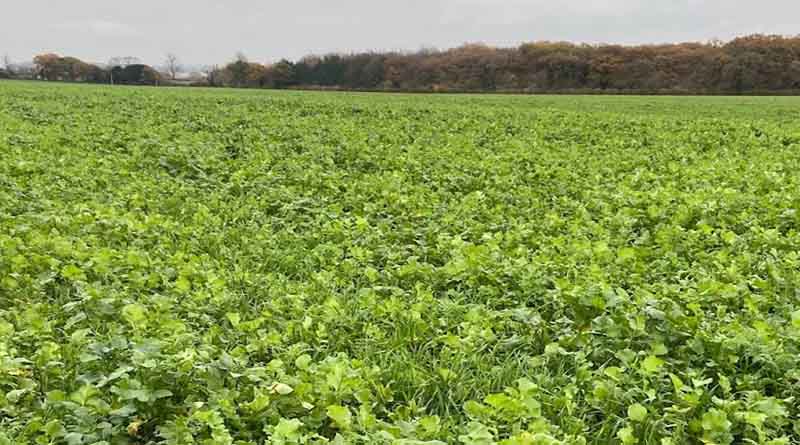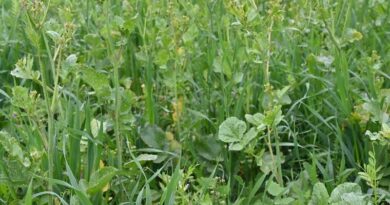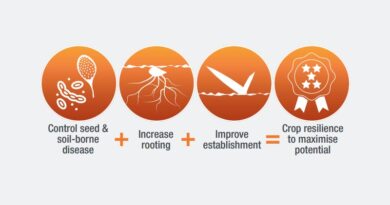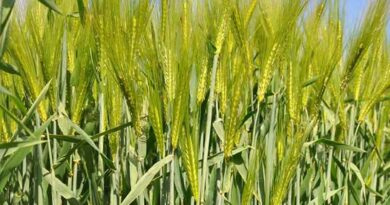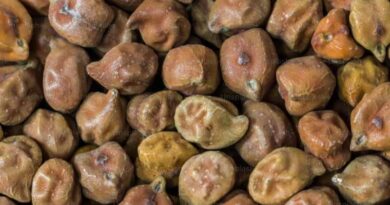Managing cover crop destruction for success in spring malting barley
30 November 2023, UK: Spring barley can be a hugely profitable option for spring cropping in the rotation, with modern varieties offering high yield potential and the premiums available for malting quality. Spring barley has fewer inputs than winter cereals making it both cost effective and less carbon intensive. With the drive to reduce our carbon emissions becoming increasingly important, this is now top of mind for many.
Many growers are now planting cover crops in advance of their spring barley for a range of different reasons, including nutrient capture, improving soil structure, supporting soil biology, reducing potential soil erosion, or providing winter habitat and food for insects. It is important to note that when growing and destroying the cover crop to think ahead to the following spring barley crop that will replace it. It is important they are not grown to the detriment of good spring crop establishment.
Cover crops also have a huge role to play in the carbon sequestration area, helping to reduce the carbon footprint of the following spring crop. Depending on the cover crop mix, they can also help with reducing the nitrogen input required in the following spring barley crop further reducing the cardon footprint, although care is needed to ensure the correct grain nitrogen specification for malting is still achieved in these situations.
When deciding on the best method and timing to destroy the cover crop, there are a few things to consider including planned spring drilling time, method of drilling, soil cultivations, soil type and weeds present.
Identifying the species within the cover crop mix is key to removing them effectively. Covers that have more frost-sensitive species such as buckwheat, phacelia or mustard, may find hard frosts will assist in destroying the crop and in conjunction with rolling or crimping in the frosty conditions this can work well. The crimper roller provides a more aggressive roll, breaking the stems and macerating them, exposing the crops to the frost. However, it’s important to remember that rolling will not deal with full crop or weed destruction alone and will need to work alongside another method.
More robust winter hardy species may need more attention and where we see some large canopies and perhaps woody stems, flailing will reduce the bulk, but this operation takes more time and fuel compared to alternative options. A herbicide will provide efficient removal of both sown cover and weed species and is particularly beneficial for addressing grass weeds at the same time. However, crops with very large canopies or biomass that have not been initially flailed may, in certain instances, require a second application, which needs to be allowed for with destruction timing.
Where soil types are heavy and tend to hold more moisture, removing the cover crop at the earliest opportunity will allow time for the biomass to break down. It will also ensure your seedbed has had chance to dry out, to ensure rapid establishment of the next crop.
The use of livestock to graze cover crops can work effectively but if not managed well they can cause more harm, particularly on heavy soil types and if soil conditions are wet. A quick intensive graze tends to work better.
For those growing multi-species cover crops under the new SFI arrangements in England, be sure to follow all the legislation around these to ensure you receive the payments. Under the rules you may destroy the multi-species winter cover crop before the end of the winter months (defined as December, January & February) if you are establishing an early-sown spring crop, like spring barley. However, this must not be done more than 6 weeks before you establish the early-sown spring crop. This includes grazing the cover crop with livestock.
The value of the SFI payment for multi-species cover crops is £129/ha per year. More information can be found at https://www.gov.uk/guidance/sfi-actions-for-soils
When choosing a spring malting barley variety, it is important to go with one that has Full MBC Approval for your market and wide user acceptance.
The variety LAUREATE has Full MBC Approval for both brewing and malt distilling, giving access to both the key malting markets in the UK. LAUREATE is the largest spring barley variety grown across the UK and has reached that position due to its excellent consistency in performance, both on farm and with end users.
The following graph demonstrates the consistency in the yield performance of LAUREATE in Official RL trials over the last 7 years. Compared to the mean RL treated trial performance, LAUREATE has been very stable across these years delivering a stable yield above the RL trial average. Other varieties have not shown such a high level of consistency with yields falling away in more recent times.

Also Read: UPL Limited announces incorporation of Advanta Seeds Ltd in South Africa
(For Latest Agriculture News & Updates, follow Krishak Jagat on Google News)

